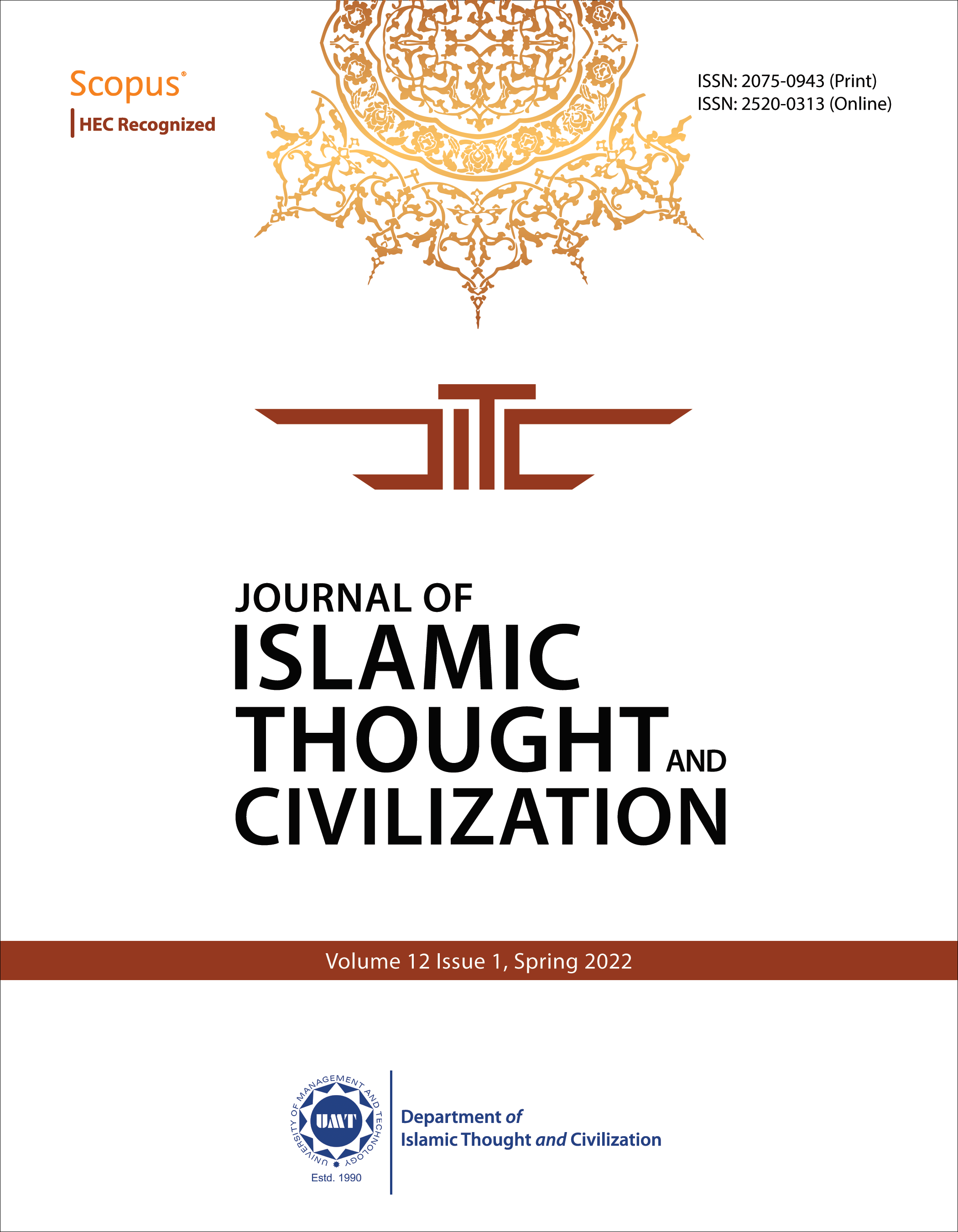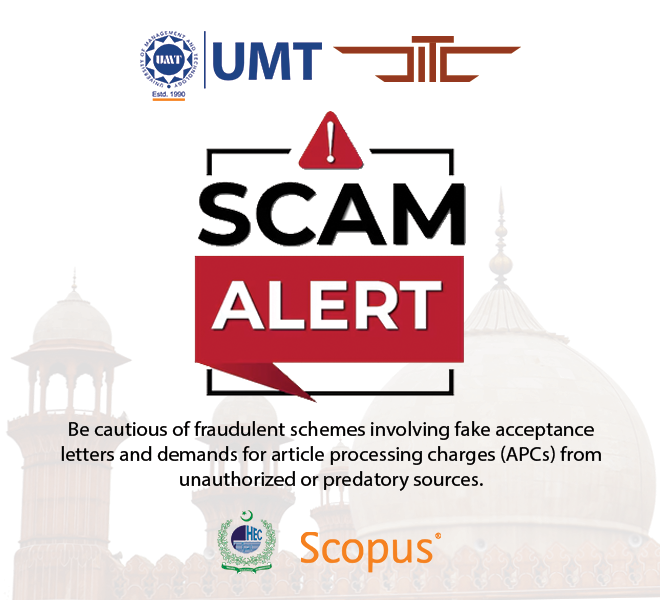“I Want to Withdraw My Hibah”: Why and How to Explain it?
Abstract
 Abstract Views: 296
Abstract Views: 296
Hibah or Islamic inter-vivos plays a vital role in reducing unclaimed inheritance estate problems, aiding recipients, and expecting recipients’ care. However, there are cases of withdrawn hibah that have been argued in the court. This study was performed to understand this problem by interviewing hibah experts in Malaysia. Thematic analysis was applied to find an overview of why donors withdraw their hibah by interviewing 19 respondents who are hibah experts in Malaysia. There were two main themes which were ‘Donor’s desire’ and ‘Recipient’s attitude.’ ‘Donor’s desire’ can be understood by the desire of donor to get benefits from the property that has been perfectly transferred or if the donor still resides on the property. Meanwhile, ‘Recipient’s attitude’ describes a change in recipients’ attitude such as ignoring and expelling the donors from the transferred property. The recipients also might sell the transferred property. This reason leads to donors wanting to withdraw their hibah. This study’s findings recommend that absolute hibah needs to be replaced with hibah legal documentation or living trust. These types of hibah are recognized by Sharī‘ah and Civil law and enable the donors to withdraw their hibah during lifetime. This study is the first attempt to discuss profoundly withdrawn hibah in qualitative approach. The paper offers an additional study on hibah practice in Malaysia.
Keywords: Thematic analysis, Hibah, Islamic inheritance, Inter-vivos, Withdrawn hibah.
Downloads
References
Abdul Rashid, Rusnadewi., and Noor Inayah Yaakub. “Hibah: Isu Pindah Milik Dan Pembatalan Hibah Hartanah Di Bawah Kanun Tanah Negara,” Shariah Law Reports Vol 1 no. 1 (Malaysia: 2010), 14-29.
Abu Bakar, Azizi., Nur Syahira Md Fauzi and Hydzulkifli Hashim. “Hibah as a Way of Islamic Wealth Management.” Webology 17, no. 2 (2020): 896-903. https://doi.org/10.14704/WEB/V17I2/WEB17075. DOI: https://doi.org/10.14704/WEB/V17I2/WEB17075
Ahmad, Khairiah., Rozaiha Ab Majid, Zaharah Abdullah, Siti Fatimah Noor Minhad, and Ismail Shafinar. “Acceptance of Hibah as an Alternative Mechanism in Muslims Asset Management.” SHS Web of Conferences 36 (Malaysia: 2017): 1-9. https://doi.org/10.1051/shsconf/20173600030. DOI: https://doi.org/10.1051/shsconf/20173600030
Alma’amun, Suhaili, Mohd Khairy Kamarudin and Mehmet Asutay. “Motivations of Inter Vivos Transfers Among Malaysian Muslims.” Acta Universitatis Danubius: Oeconomica Vol. 12, no. 3 (2016): 149-62.
Anthony, David R, Sandy Gordon, and Daniel F. Gucciardi. “A Qualitative Exploration of Mentally Tough Behaviour in Australian Football.” Journal of Sports Sciences Vol. 38, no. 3 (2020): 308-19. https://doi.org/10.1080/02640414.2019.1698002. DOI: https://doi.org/10.1080/02640414.2019.1698002
Azhar, Alias. “The Practice of Hibah in Trust Companies: A Case Study in As-Salihin Trustee Berhad.” Jurnal Sultan Alauddin Sulaiman Shah Vol. 5 no. 1 (2018): 11-19.
Azhar, Alias., Mohammad Azam Hussain, Muhammad Hafiz Badarulzaman and Fauziah Mohd Noor. “Pengurusan Harta Dalam Islam: Perspektif Hibah Di Malaysia.” Journal of Human Development and Communication Vol. 3 (2014): 115-28.
Azmi, Amylia Fuziana., Nik Salida Suhaila Nik Saleh, and Mohamad Zaharuddin Zakarian. “Jurisdictional Conflicts in Facing Covid-19 Pandemic: An Analysis of Hibah Cases in Negeri Sembilan Syariah Courts.” INSLA E-Proceedings 3, no. 1 (2020): 622-28.
Bennett, Sarah E., Nicola Walsh, Timothy Moss, and Shea Palmer. “Understanding the Psychosocial Impact of Joint Hypermobility Syndrome and Ehlers–Danlos Syndrome Hypermobility Type: A Qualitative Interview Study.” Disability and Rehabilitation Vol. 43, no. 6 (2019): 1-10. https://doi.org/10.1080/09638288.2019.1641848. DOI: https://doi.org/10.1080/09638288.2019.1641848
Boddy, Clive Roland. “Sample Size for Qualitative Research.” Qualitative Market Research Vol. 19, no. 4 (2016): 426-32. https://doi.org/10.1108/QMR-06-2016-0053. DOI: https://doi.org/10.1108/QMR-06-2016-0053
Cook, Julia. “Keeping It in the Family: Understanding the Negotiation of Intergenerational Transfers for Entry into Homeownership.” Housing Studies Vol. 36, no. 8 (2020): 1-19. https://doi.org/10.1080/02673037.2020.1754347. DOI: https://doi.org/10.1080/02673037.2020.1754347
Daud, Mohd Zaidi, Mohd Hafiz Jamaluddin, and Mohd Norhusairi Mat Hussin. “Innovation in Muslim Estates Distribution Planning According to the Qur'ān and Sunnah.” Al-Bayan - Journal of Qurán and Hadith Studies Vol. 16, no. 1 (2018): 60–89. https://doi.org/10.1163/22321969-12340059. DOI: https://doi.org/10.1163/22321969-12340059
Drinkwater, Kenneth., Neil Dagnall, Sarah Grogan, and Victoria Riley. “Understanding the Unknown: A Thematic Analysis of Subjective Paranormal Experiences.” Australian Parapsychological Review Vol. 17, no. 1 (2017): 23-46.
Fernandez, Loretta. “Qualitative Interview Analysis: The Use of Systemic Functional Linguistics to Reveal Functional Meanings.” Forum Qualitative Sozialforschung Vol.19, no. 2 (2018): 1-22. https://doi.org/10.17169/fqs-19.2.2663.
Fu, Chien Hao. “Living Arrangement and Caregiving Expectation: The Effect of Residential Proximity on Inter Vivos Transfer.” Journal of Population Economics Vol. 32, no. 1 (2019): 247–75. https://doi.org/10.1007/s00148-018-0699-7. DOI: https://doi.org/10.1007/s00148-018-0699-7
Halim, Akmal Hidayah., and Tajul Aris Ahmad Bustami. “Execution of Hibah Amanah as an Instrument of Islamic Property Management in Malaysia.” Kanun Vol. 29, no. 2 (2017): 90-115. http://jurnalkanun.dbp.my/wordpress/ wp-content/uploads/2017/08/hibah.pdf.
Hassan, Rusni., and Nor Azdilah Mohamad Zaizi. “The Concept and Application of Hibah as a Financial Instrument from the Malaysian Legal Perspective: An Analysis.” IIUM Law Journal Vol. 28, no. 1 (2020): 227-52. https://doi.org/10.31436/iiumlj.v28i1.498. DOI: https://doi.org/10.31436/iiumlj.v28i1.498
Hayhoe, Celia Ray, and Michelle L. Stevenson. “Financial Attitudes and Inter Vivos Resource Transfers from Older Parents to Adult Children.” Journal of Family and Economic Issues Vol. 28, no. 1 (2007): 123-35. https://doi.org/10.1007/s10834-006-9054-3. DOI: https://doi.org/10.1007/s10834-006-9054-3
Kamarudin, Mohd Khairy, Nasrul Hisyam Nor Muhamad, and Abdul Hafiz Abdullah. “Parents’ Transfer to Children: Study on the Impact of ‘Pindah Milik Tanah 1 Hari’ (Land Transfer Ownership in One-Day) by the Malaysian Land Office.” International Journal of Academic Research in Business and Social Sciences Vol. 8, no. 6 (2018): 520-29. https://doi.org/10.6007/ijarbss/v8-i6/4255. DOI: https://doi.org/10.6007/IJARBSS/v8-i6/4255
Kamarudin, Mohd Khairy, Nasrul Hisyam Nor Muhamad, Suhaili Alma’amun, Abdul Hafiz Abdullah, Syahrulnizam Saat and Nurul Osman Samurah. “Inter Vivos Transfers Based on Affection for Wealth Distribution Planning in Malaysia.” The Journal of Asian Finance, Economics and Business Vol.7, no. 4 (2020): 299-307. https://doi.org/10.13106/. DOI: https://doi.org/10.13106/jafeb.2020.vol7.no4.299
Kambol, Rositah. “Pengurusan Harta Orang Islam Melalui Hibah: Isu Dan Penyelesaian.” Journal of Law and Governance Vol. 2, no. 1 (2019): 1689-99.
Lange, Wendela de, Marijke C. Kars, Irina E. Poslawsky, Marieke J. Schuurmans, and Thóra B. Hafsteinsdóttir. “Postdoctoral Nurses’ Experiences with Leadership and Career Development: A Qualitative Study.” Journal of Nursing Scholarship Vol. 51, no. 6 (2019): 689-98. https://doi.org/10.1111/jnu.12519 DOI: https://doi.org/10.1111/jnu.12519
Lee, Hyojung, Dowell Myers, Gary Painter, Johanna Thunell, and Julie Zissimopoulos. “The Role of Parental Financial Assistance in the Transition to Homeownership by Young Adults.” Journal of Housing Economics Vol. 47 no. 3 (2020): 1-8. https://doi.org/10.1016/j.jhe.2018.08.002 DOI: https://doi.org/10.1016/j.jhe.2018.08.002
McGarry, Kathleen. “Dynamic Aspects of Family Transfers.” Journal of Public Economics Vol. 137 (2016): 1-13. https://doi.org/10.1016/ j.jpubeco.2016.03.008 DOI: https://doi.org/10.1016/j.jpubeco.2016.03.008
Md Azmi, Fatin Afiqah, and Mohammad Tahir Sabit Mohammad. “A Proposal for a Single Tribunal of Estates Distribution in Malaysia.” Jurnal Teknologi 75, no. 10 (2015): 1-16. DOI: https://doi.org/10.11113/jt.v75.5261
Mohamed Said, Noor Lizza., Mohd Ridzuan Awang, and Amir Husin Mohd Nor. “Qabd Dan Hukum Penarikan Balik Hibah.” Jurnal Muamalat 3 (2010): 157-84.
Mohamed Said, Noor Lizza, Mohd Ridzuan Awang, Amir Husin Mohd Nor, Mohd Zamro Muda, and Abdul Basir Mohamad. “Revocation of Gift (Hibah) According to Islamic Law and Its Practice under Syria Civil Law 1949.” International Business Management 7, no. 1 (2013): 1-7.
Mohd Sa’afie, Adilah, and Mohd Zamro Muda. “Guideline in Preparing Hibah Document at the Shariah High Court.” Journal of Contemporary Islamic Law 3, no. 1 (2018): 1-7.
Mohd, Yusof Y., and A. Ahmad. “Hibah as an Alternative Mechanism in Muslim Assets Management: A Study in Melaka Tengah.” South East Asia Journal of Contemporary Business, Economics and Law 3, no. 3 (2013): 1-5.
Muhammad Serji, Rabi’ah. “Pengecualian Kepada Hak Milik Tidak Boleh Disangkal Dalam Undang-Undang Tanah Di Malaysia.” International Research Management and Innovation Conference 2014, (Kuala Lumpur: 2014), 571–82.
—. “Penipuan Dalam Urusniaga Tanah: Analisis Terhadap Hak Milik Tidak Boleh Disangkal.” In Proceeding of the 1st International Conference on Management and Muamah 2014, 1, (2014): 277–85.
Muhammad Serji, Rabi’ah, and Rohimi Shapiee. “Issues and Legal Conflicts Related to Hibah of Immovable Properties in Malaysia.” Journal of Muwafaqat Vol. 1, no. 1 (2018): 84-101.
Nivakoski, Sanna. “Does the Exchange Motive Influence Intergenerational Transfers? Evidence from Ireland.” Review of Economics of the Household Vol. 17, no. 3 (2019): 1049-79. https://doi.org/10.1007/s11150-018-9422-4. DOI: https://doi.org/10.1007/s11150-018-9422-4
Noordin, Nazrul Hazizi, Muhammad Issyam Ismail, Muhammad Abd Hadi Abd Rahman, Siti Nurah Haron, and Adam Abdullah. “Re-Evaluating the Practice of Hibah Trust in Malaysia,” Humanomics Vol. 32, no. 4 (2016): 418–36. https://doi.org/10.1108/H-05-2016-0044 DOI: https://doi.org/10.1108/H-05-2016-0044
Nor Muhamad, Nasrul Hisyam. “Elemen Qabd (Pindah Milikan) Dalam Hibah: Analisis Terhadap Keperluan Dan Pelaksanaannya Mengikut Perspektif Undang-Undang Islam.” Jurnal Syariah Vol. 17, no. 2 (2009): 243-66.
Nor Muhamad, Nasrul Hisyam., Ahmad Che Yaacob, and Norazila Mat Hussain. “The Concept of Conditional ‘Hibah’ and Its Application in Property Planning,” UMRAN - International Journal of Islamic and Civilizational Studies Vol. 4, no. 3 (2017): 32-41. DOI: https://doi.org/10.11113/umran2017.4n3-1.251
O’Connor, Cliodhna., and Helene Joffe. “Intercoder Reliability in Qualitative Research: Debates and Practical Guidelines,” International Journal of Qualitative Methods Vol. 19 no. 1 (2020): 1-13. https://doi.org/10.1177/1609406919899220 DOI: https://doi.org/10.1177/1609406919899220
Olivera, Javier. “The Division of Inter-Vivos Parental Transfers in Europe.” Journal of the Economics of Ageing Vol. 9 (2017): 41-51. https://doi.org/10.1016/j.jeoa.2016.05.005. DOI: https://doi.org/10.1016/j.jeoa.2016.05.005
Othman, Nurul Syahirah., Noor Liza Mohamed Said, Mohd Zamro Muda, and Nasrul Hisyam Nor Muhamad. “Case Analysis on the Practice of Conditional Hibah in Malaysia.” Islamiyyat Vol. 39, no. 2 (2017): 135-42.
Sarip, Mohd Musa., Aminuddin Adnan, and Mohd Mustaffa Jusoh. “Knowledge Level of Real Estate Hibah in the Islamic Estate Planning.” Journal of Islamic, Social, Economics and Development Vol. 2, no. 5 (2017): 79-89.
Sufian, Azlinor., and Nor Asiah Mohamad. “The Proposal for a Single Title System under the National Land Code 1965: Between Theory and Reality.” Kanun Vol. 27, no. 2 (2015): 314-25.
Vaismoradi Mojtaba, Jacqueline Jones, Hannele Turunen, and Sherrill Snelgrove. “Theme Development in Qualitative Content Analysis and Thematic Analysis.” Journal of Nursing Education and Practice Vol. 6, no. 5 (2016):100-110. https://doi.org/10.5430/jnep DOI: https://doi.org/10.5430/jnep.v6n5p100
Copyright (c) 2022 Mohd Khairy Kamarudin, Nasrul Hisyam Nor Muhamad, Suhaili Alma'amun, Norhaifa Ganti

This work is licensed under a Creative Commons Attribution 4.0 International License.

This work is licensed under a Creative Commons Attribution 4.0 International License. Authors retain copyright and grant the journal right of first publication with the work simultaneously licensed under a Creative Commons Attribution (CC-BY) 4.0 License that allows others to share the work with an acknowledgement of the work’s authorship and initial publication in this journal.








